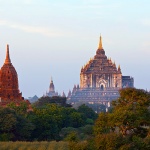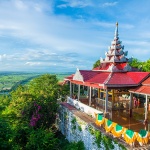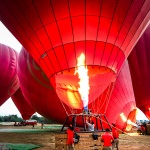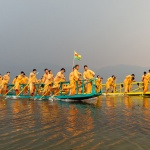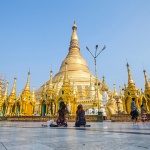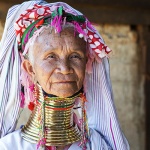By Stuart Danker
After visiting the Laykyun Setkyar statue near Monywa in Myanmar, I was certain that I had seen the most impressive of large structures in this country. However, many reviews about the Mingun Pahtodawgyi had touted it as another must-visit when it came to colossal structures, so I knew I had to go visit this site.
Built in the 18th century, this structure would’ve dwarfed most other pagodas in the world if not for the many challenges presented during its construction. It was King Bodawpaya who had ordered this pagoda to be built, and this project meant so much to him that he left the affairs of the state to his son to relocate nearby so that he could better oversee the project.
Tale of the Tape
This monument measures 50 metres in height and 70 metres in width, though its intended height was meant to be a staggering 152 metres. Don’t let its eventual height fool you though – 50 metres may not sound like much, but it really looks much more impressive in person. Unfortunately, there’s a dark side to this pagoda. The building that we see today was built on the backs of prisoners of war and slaves, and it took 7 years to get to this stage.Like many other colossal structures, merely using words to describe them doesn’t do justice to the awe they strike into the hearts of visitors standing before them. That’s exactly what I felt looking up at this structure – and it was just a part of what could have been. Imagine what I would’ve felt had the stupa actually been fully constructed.
Built ToughBeing a stupa, this building isn’t hollow but filled solid inside out. There is a little niche that visitors can walk up to, and many Buddhists make their way there to pay their respects to the Buddha image locked behind bars here, which was also built around the 18th century. Here, the Buddhist flag, consisting of 5 columns of different colours as well as 5 squares at the edge in a similar arrangement, flies proudly at the mast.
There’s also an option to climb a flight of stairs that lead up the right side of the niche. This path will take you to the top of the unfinished stupa where views of other neighbouring pagodas and the Ayeyarwady River can be seen. However, many paths up have now been blocked due to the recent earthquakes that hit this region, rendering them unsafe for visitors.True to Myanmar architecture, two chintes stand guard before this stupa. Standing at 29 metres tall, these beings were easily the biggest chintes I’d ever seen in my entire life. They were so large that even without their heads – which broke off and fell into the river during the great earthquake of 1838 – they still proved to be imposing beings that live up to the title of ‘guardians’. What also impressed me was the attention to detail, as the water-draining stone pipes were carved into crocodile heads – a commendable effort when cylindrical tubes would have sufficed.
The same earthquake in 1838 has also caused massive cracks to appear on the various faces of the building, stretching from the top all the way to the bottom. Rubble remains on the ground where these cracks have formed.
Unfinished Story
It’s hard to fathom how our ancestors of the 18th century even managed to construct this partial monument to begin with, but it’s easy to see why it had remained unfinished. Some sources say that the lack of resources and labour was why constructions came to a stop, and that would have been an understandable reason by itself.However, other experts believe that, due to the enormous strain the construction of this building was bringing to the kingdom, many dissatisfied citizens started a prophecy stating that the kingdom would fall upon completion of the pagoda. They had launched this campaign to capitalise on the king’s superstitious nature. This helped slow progress, and upon the king’s demise in 1819, the project was halted once and for all.
Right outside this area, visitors can take a look at what the pagoda might have been had its construction been fully completed. The Pon Daw Pagoda is a miniature version built before the Ayeyarwady River, and looking at it will give you an even bigger sense of awe, as it’s impressive enough just looking at a third of the structure.If you’re looking to visit this place, do try to come during sunrise or sunset, as there is very little cover and temperatures can soar pretty high in the afternoon. Other than that, I highly

